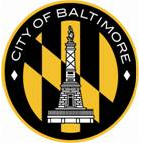City of Baltimore Releases First Ten-Year Fiscal Forecast
Wednesday Feb 6th, 2013

FOR IMMEDIATE RELEASE
BALTIMORE, MD (FEBRUARY 6, 2013) — Today, the City of Baltimore released a detailed, first-of-its-kind Ten-Year Fiscal Forecast of the local government’s finances. The forecast is part of Mayor Stephanie Rawlings-Blake’s comprehensive ten-year financial planning effort to proactively confront Baltimore’s long-term fiscal challenges. Mayor Rawlings-Blake and Finance Department officials held a press briefing at City Hall to review the forecast. "This Ten-Year Fiscal Forecast makes clear that City government must implement serious new fiscal reforms in order to balance the budget, protect City services from major cuts, invest in infrastructure, and reduce the property tax burden for city residents over the next decade,” Mayor Rawlings-Blake said. “Taking on these challenges will be critical—both for the health of the City's finances and to help Baltimore compete for growth over the next ten years and beyond. A status quo approach is not sustainable." In September 2011, at Mayor Rawlings-Blake’s direction, the City engaged a national consulting firm experienced in public sector long-range financial plans, Public Financial Management, Inc. (PFM), to develop the Ten-Year Fiscal Forecast. Past PFM engagements, including successful long-range plans developed with Philadelphia, Pittsburgh, and the District of Columbia, have typically been linked to strategies for governments under external oversight boards and facing immediate fiscal distress. In Baltimore, the mayor’s effort is proactive, enabling the City to better head off underlying structural budget pressures—both to maintain sound fiscal condition and to identify additional resources for critical long-range investments. In the coming weeks, Mayor Rawlings-Blake is expected to propose a bold set of major reforms to address the fiscal challenges outlined in the Ten-Year Fiscal Forecast. Ten-Year Forecast findings include:
- City government faces a serious structural imbalance between slow-growing revenues and faster-growing expenses. Under a mainstream set of economic assumptions, PFM projects a fiscal gap of approximately $30.3 million in FY2014, growing to nearly $125 million by FY2022. Without corrective action, over the nine years from FY2014-FY2022, this cumulative shortfall would total $744.8 million. The structural deficit is largely driven by growing employee healthcare and pension costs; these combined costs are projected to grow by another 40% during the plan period, despite recent reforms.
- City government agencies face a $1.1 billion general fund “infrastructure deficit” over the next decade. Investment in the renewal and replacement of basic City infrastructure—roads, bridges, and City buildings, including police and fire stations and maintenance facilities—now falls far short of the levels required to just maintain the current state of repair. City government would need to increase capital funding for basic infrastructure by an order of magnitude of well over $100 million annually to meet “reasonable” standards. This analysis is exclusive of capital needs for public schools and water infrastructure, and also focuses on local funding, excluding anticipated state and federal capital assistance.
- City government has an aggregate unfunded retiree liability of more than $3 billion (FY 2011)—including actuarial shortfalls in the City's Fire and Police Employees' Retirement System (FPERS, $558.6 million), Employees' Retirement System (ERS, $530.2 million), and non-pension Other Post-Employment Benefits (OPEB, $2.1 billion), the City must take more meaningful actions to reduce its unfunded retiree liabilities.
- Baltimore’s high overall tax burden—especially the property tax rate—falls disproportionately on city residents and businesses, further impeding the city’s ability to compete for growth. Baltimore cannot simply hike property tax rates to improve its long-term financial situation. Given current competitiveness challenges, such property tax increases would only further erode the city’s population, tax base, and overall economy over time. Further, Baltimore’s second-largest revenue source, the income tax, is already at the maximum level allowed under state law and cannot be increased to fix future budget shortfalls. In order to promote long-term growth and reinvestment, Baltimore must find new ways to restructure and diversify its overall tax policies to reduce the burden on residents without slashing needed revenue to fund basic City services.
Important Note: The above narrative is only a brief summary of the Ten-Year Fiscal Forecast. It is strongly-recommended that individuals interested in the forecast read the comprehensive document from PFM in order to understand the full context of the forecast and potential ramifications for the City of Baltimore. The Public Financial Management, Inc. City of Baltimore, Maryland, Ten-Year Fiscal Forecast, FY2013-FY2022 is linked below.